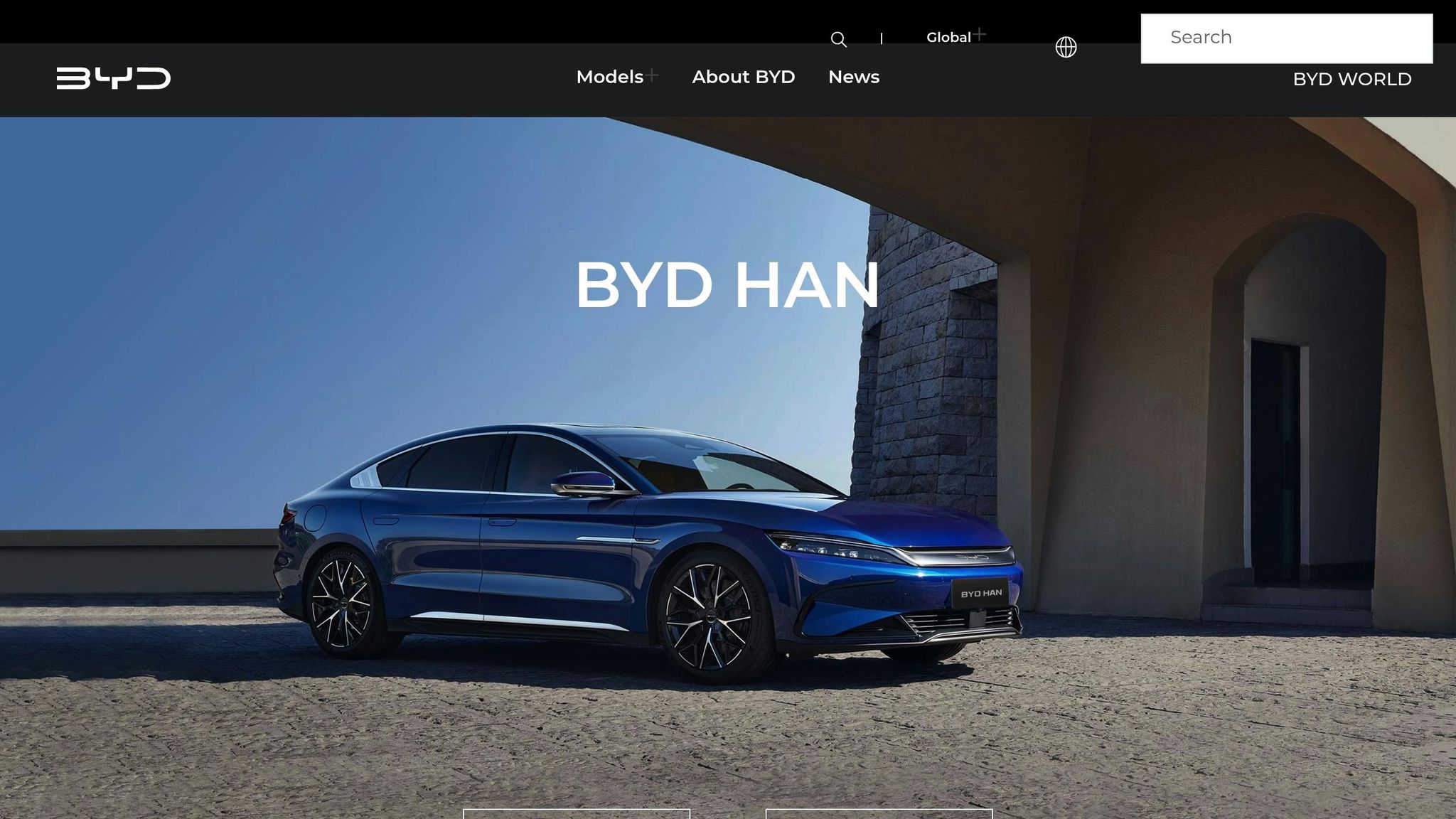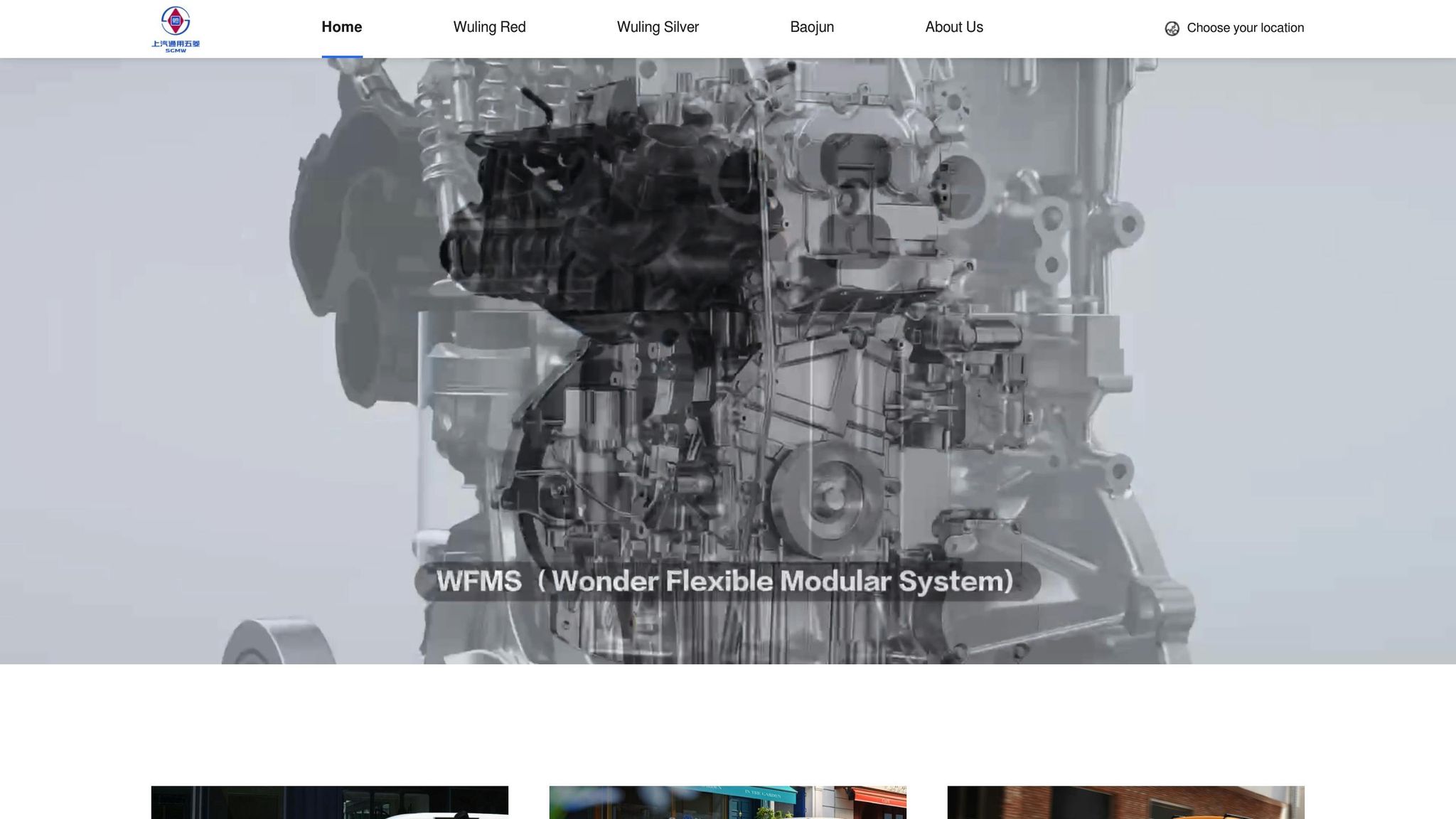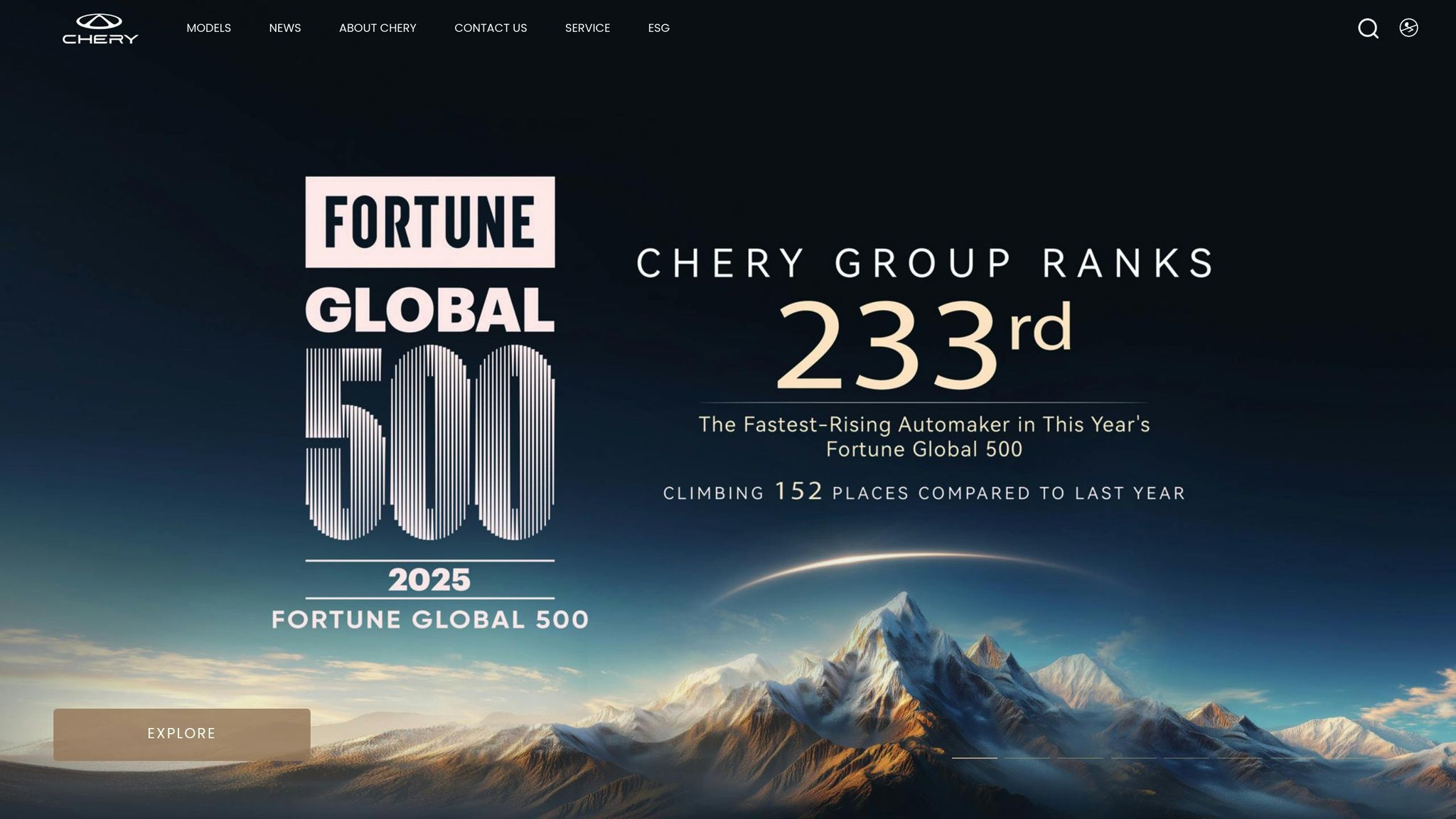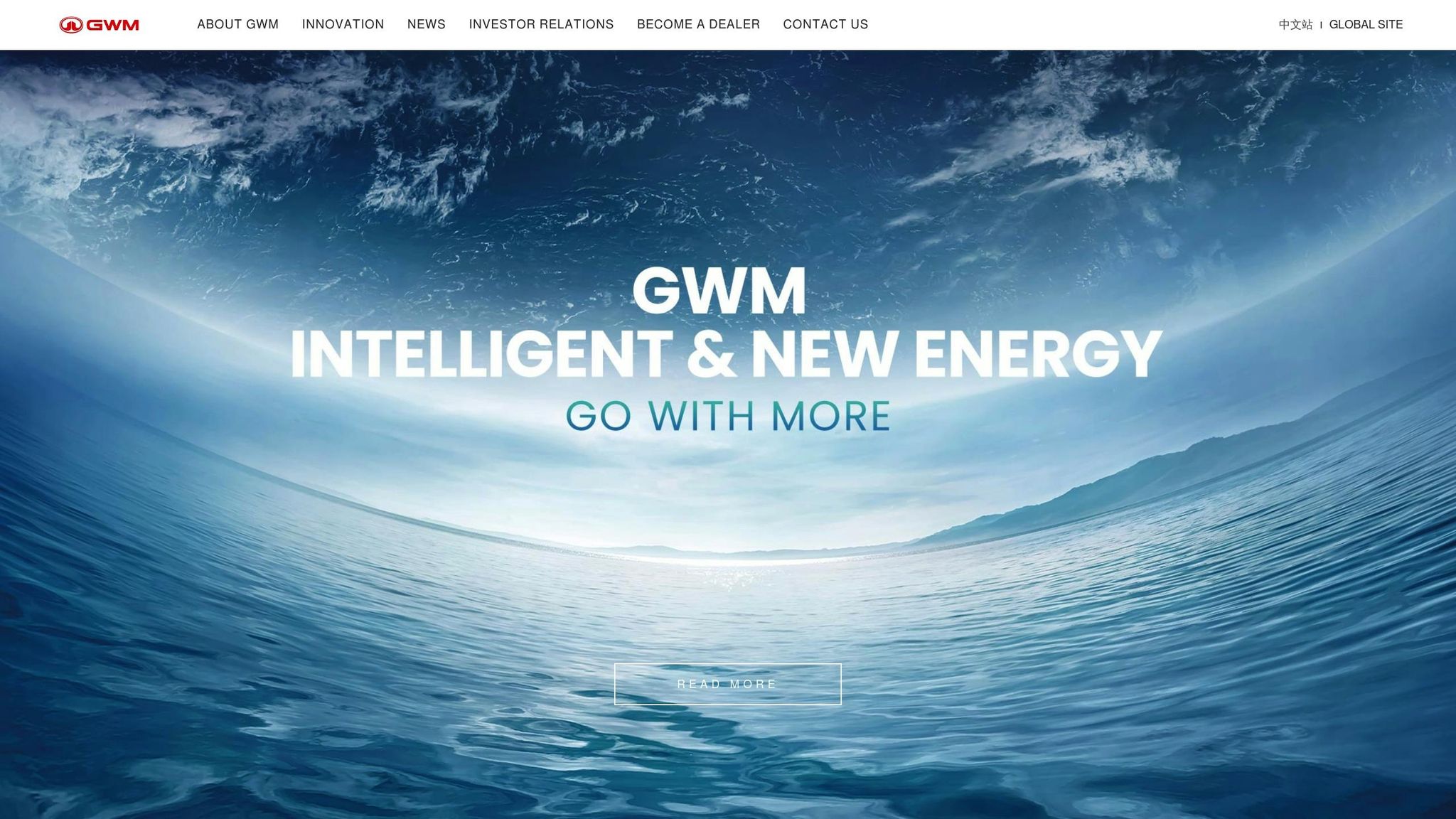
Chinese electric vehicles (EVs) are reshaping Africa’s affordable EV market by focusing on low prices, practical designs, and local needs. With sales doubling to nearly 11,000 vehicles by 2024 and revenue projections hitting $209.9 million by 2025, the market is growing fast. Chinese brands like BYD, Wuling, Chery, and Great Wall Motor are leading the way by offering EVs priced 20–30% lower than Western and Japanese competitors. Here’s a quick rundown:
- BYD: Offers competitive pricing (e.g., BYD Atto 1 under $21,000) and financing options tailored to local income levels.
- Wuling: Focuses on ultra-compact, budget-friendly models like the Hongguang MINI EV, ideal for urban areas.
- Chery: Balances affordability with a range of entry-level EVs for budget-conscious buyers.
- Great Wall Motor (GWM): Combines low pricing (e.g., models under $22,500) with hybrid options to ease EV adoption.
Key challenges include limited service networks and infrastructure gaps, but Chinese manufacturers are addressing these by partnering with African governments to develop charging networks and local assembly plants. These efforts are making EVs more accessible, helping Chinese brands gain a strong foothold in Africa’s growing market.
Chinese EVs You Can Buy in Kenya – Africa EV Show
1. BYD

BYD is making waves in Africa’s electric vehicle (EV) market by offering competitive pricing and innovative financing options. Their approach is designed to make EVs more attainable for everyday buyers who previously found them out of reach. Here’s a closer look at how BYD is tackling pricing, accessibility, and financing to win over the market.
Pricing
The upcoming BYD Atto 1, set to launch in South Africa in September 2025, is expected to cost less than $21,000, with a possible upper limit of $24,000. For comparison, the current BYD Dolphin is priced at about $32,500. This pricing strategy places the Atto 1 in direct competition with popular entry-level gas-powered cars like the VW Polo Vivo. Even more compelling, BYD estimates that pre-owned Atto 1 models could sell for $12,000 or less within three to five years, making EV ownership a reality for a broader audience.
Accessibility
BYD highlights the long-term savings of owning an EV, pointing out that lower home charging and maintenance costs can offset the initial purchase price. To ease concerns about reliability and long-term expenses, the company offers an 8-year battery warranty, giving buyers added peace of mind.
Market Strategies
To address local financial challenges, BYD has teamed up with Absa, a major South African bank, to create customized financing options. These financing packages are designed with local income levels and credit profiles in mind, helping more people overcome financial barriers to owning new EV technology.
2. Wuling

Wuling has carved out a space in Africa’s electric vehicle market by offering ultra-compact, budget-friendly models that cater to practical transportation needs. While it doesn’t command the same market presence as BYD, Wuling’s emphasis on affordability and urban mobility has struck a chord with consumers in various African nations. Its ultra-compact design stands out as a practical solution for city dwellers.
Pricing
The Hongguang MINI EV, Wuling’s flagship model, embodies the brand’s strategy of providing an affordable micro-EV option. By keeping the design compact and features minimal, Wuling has managed to lower production costs, making the car an appealing choice for budget-conscious buyers in Africa.
Accessibility
Wuling vehicles have found a growing audience in countries like Egypt and Ethiopia, where they are increasingly used for taxi services and family transportation. Their small size is a perfect match for crowded urban environments with narrow streets and heavy traffic. However, long-term reliability remains a concern. Industry analyst Lei Xing highlights this by saying:
"The winners won’t just be the cheapest. They’ll be the ones that build trust."
This highlights the need for Wuling to focus on durability and strong after-sales support to secure a lasting foothold in the market.
Design and Features
Wuling’s vehicles, including the Hongguang MINI EV, are not specifically adapted for African road conditions or climate. The car features 12-inch wheels and minimally padded seats, which can make every bump on the road a noticeable experience for passengers. Additionally, the absence of electronic stability control (ESC) – a safety feature required in some Western markets – raises questions about safety standards.
Market Strategies
Wuling has positioned its vehicles as practical and affordable solutions for short-distance travel and commercial uses, such as taxi services. By focusing on basic electric mobility and keeping operating costs low, the company has tapped into a market segment where affordability takes precedence over luxury features.
3. Chery

Chery has carved out a niche in Africa’s EV market by focusing on affordability. By keeping production costs low and simplifying features, Chery delivers entry-level electric vehicles at prices that appeal to budget-conscious buyers. This approach makes EV ownership a realistic option for more people across the continent.
While BYD leans on financing partnerships and Wuling targets ultra-compact city cars, Chery’s strategy revolves around cost-efficiency. This allows them to attract a wider audience looking for practical electric transportation without the added expense of premium features.
Chery’s emphasis on affordability highlights the competitive landscape of Africa’s EV market, paving the way for other brands, like Great Wall Motor, to define their own strategies.
sbb-itb-99e19e3
4. Great Wall Motor

Great Wall Motor (GWM) is making waves in Africa’s electric vehicle (EV) market by focusing on affordability and smart positioning. The company is determined to make EVs more accessible, especially in South Africa, where pricing plays a crucial role in consumer adoption. Let’s dive into how GWM sets itself apart with its pricing and market approach.
Pricing
GWM has introduced EVs priced under 400,000 rand (around $22,500). This includes their Ora lineup, featuring models like the ORA EV 300 Super Luxury, ORA EV 400 Super Luxury, ORA 400 Ultra Luxury, and ORA EV 400 GT Ultra Luxury. These vehicles deliver solid value without the hefty price tags often associated with Western brands.
Market Strategies
What makes GWM stand out is its ability to offer similar features to those of established brands but at lower upfront costs. Greg Cress from Accenture highlights this competitive edge:
"As long as they remain affordable from an up-front cost perspective, they will be differentiated against legacy brands offering similar specifications."
To further attract buyers, GWM has rolled out affordable hybrid models. These serve as a middle ground for consumers hesitant about fully committing to EVs, helping to address concerns like range anxiety. By combining competitive pricing with a focus on features and performance, GWM ensures that consumers don’t have to compromise when choosing an electric vehicle. This approach not only intensifies competition but also gives buyers more options and better value.
Pros and Cons
Chinese EV brands bring a mix of strengths and hurdles as they navigate Africa’s electric vehicle (EV) market. Here’s a breakdown of how some of the key players stack up:
| Brand | Pros | Cons |
|---|---|---|
| BYD | • Cutting-edge battery technology, including the proprietary Blade Battery • Large-scale manufacturing enables competitive pricing • Diverse lineup, from compact cars to commercial vehicles • Collaborations to expand charging infrastructure |
• Limited service networks in rural areas • Higher price tags compared to some rivals • Advanced systems may require specialized maintenance |
| Wuling | • Extremely affordable, targeting the mass market • Compact designs ideal for urban use • Simple, reliable technology with low maintenance costs • Focused on no-frills transportation |
• Shorter driving ranges compared to premium models • Basic interiors with fewer comfort features • Smaller charging network coverage • Limited advanced safety and tech features |
| Chery | • Balanced pricing that appeals to both budget and premium buyers • Wide range of models catering to different needs • Expanding dealer presence across Africa • Competitive after-sales support and warranties |
• Still building brand recognition in some regions • Occasional difficulties in sourcing spare parts • Entry-level models lack fast-charging capabilities |
| Great Wall Motor | • Competitive pricing across multiple models • Hybrid options to reduce range anxiety • Feature-packed vehicles rivaling established brands • Growing presence in key African markets |
• Newer player with a less established reputation • Limited model options in certain areas • Long-term reliability data is still emerging • Smaller service network compared to traditional automakers |
Each brand’s approach highlights its unique strategy and challenges in Africa’s competitive EV market. While companies like BYD lead with advanced technology, others like Wuling focus on affordability and simplicity. Chery strikes a middle ground, offering a mix of value and variety, while Great Wall Motor targets feature-rich models at aggressive prices.
One major strength for Chinese manufacturers is their collaboration with local governments and utility providers to develop charging infrastructure. This effort complements their ability to design vehicles that fit Africa’s evolving electrical systems.
On the flip side, limited service networks remain a sticking point, especially in remote areas where maintenance facilities are scarce. Brands like BYD, with their advanced battery systems, may inspire more confidence, but newer entrants like Great Wall Motor still have to prove their reliability over time. These dynamics underline the varied strategies shaping the African EV market.
Conclusion
Chinese electric vehicle (EV) manufacturers have reshaped Africa’s affordable EV market by focusing on strategic pricing, practical designs, and market-specific approaches. Their success lies in recognizing that affordability is the top priority for many African consumers. By offering vehicles that meet essential transportation needs without unnecessary extras, these companies have made EVs more accessible than ever. This sets the stage for further exploration of trends and partnerships shaping the market.
Brands like BYD, Wuling, Chery, and Great Wall Motor have gained a foothold by combining large-scale manufacturing with localized adaptations. This strategy has opened the door for middle-class consumers, making EVs a realistic option for those who previously couldn’t consider them.
The market is set to grow even further with emerging trends. Local assembly plants are popping up in key African countries, cutting import costs and creating jobs. This move toward regional production is expected to lower prices, improve availability, and shorten delivery times.
Another game-changer is the expansion of charging infrastructure. Chinese manufacturers are working alongside African governments and utility providers to build robust charging networks. These partnerships tackle one of the biggest hurdles to EV adoption – charging accessibility – while signaling a long-term commitment to the market. This effort complements earlier initiatives to expand local charging solutions.
On top of that, Chinese brands are strengthening relationships with local dealers, financial institutions, and governments. These collaborations are paving the way for creative financing options and building the service infrastructure needed to support the growing number of EVs on the road.
As brands like BYD and Wuling continue to deepen their presence, they are well-positioned to meet the rising demand as African consumers grow more confident in EV technology. Their early focus on understanding local needs, investing in infrastructure, and establishing a strong market presence has given them a lasting edge in the region.
The rise of Chinese EVs in Africa is about more than just competitive pricing – it highlights a synergy between manufacturers’ strengths and the needs of African consumers. This alignment has fundamentally transformed perceptions of electric mobility across the continent.
FAQs
Why are Chinese electric vehicles so popular in Africa’s affordable EV market?
Chinese electric vehicles (EVs) are making waves in Africa’s affordable EV market, largely thanks to their budget-friendly pricing. By capitalizing on lower production costs, government subsidies, and large-scale manufacturing, Chinese automakers are able to produce EVs that fit the budgets of a broader range of consumers.
What sets these vehicles apart is their adaptability to African conditions. They are built to handle rough roads and come with solutions to address challenges like limited charging infrastructure. On top of that, initiatives such as partnerships with local governments, setting up production facilities within Africa, and offering flexible financing options make these EVs even more appealing. All these factors combine to position Chinese EVs as a smart, cost-effective option for many African drivers.
How are Chinese EV makers overcoming limited service networks and charging infrastructure in Africa?
Chinese electric vehicle (EV) manufacturers are stepping up to overcome Africa’s infrastructure hurdles by expanding dealership networks and introducing practical charging solutions. Companies like BYD are leading the way, increasing the number of service centers to make maintenance and support more convenient for local customers.
To tackle the challenges of limited charging infrastructure, these manufacturers are offering flexible options such as battery swapping, mobile charging units, and portable chargers. These solutions are particularly useful in regions with unreliable electricity, ensuring EVs stay functional and appealing to drivers across the continent. By focusing on solutions tailored to local needs, Chinese EV companies are addressing infrastructure gaps and adapting to the specific demands of the African market.
How are Chinese EV brands making electric vehicles more affordable and accessible in Africa?
Chinese electric vehicle (EV) brands are finding creative ways to make their cars more affordable and accessible for African buyers. One key approach involves teaming up with local governments and businesses to establish joint ventures and build assembly plants. By producing vehicles locally in places like Ghana and Nigeria, they cut down on production and import costs. This also allows them to adapt vehicle designs to better suit regional needs while streamlining their supply chains.
Another strategy is offering budget-friendly models, often priced below $22,500. Lower production costs and local incentives help make these price points possible. To further ease the path to EV ownership, they provide flexible financing options, making it easier for consumers to afford these vehicles. By tackling challenges like cost, durability, and the lack of widespread charging infrastructure, Chinese EV brands are positioning themselves as a practical solution for Africa’s expanding market.




